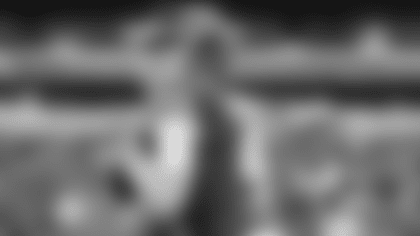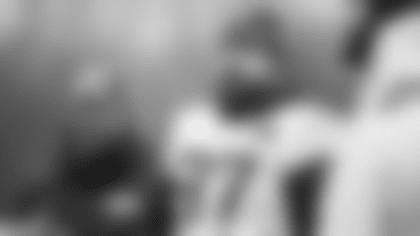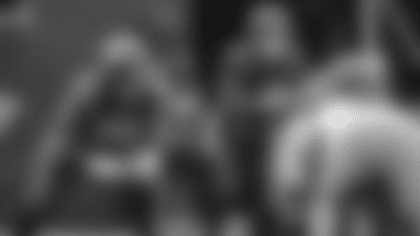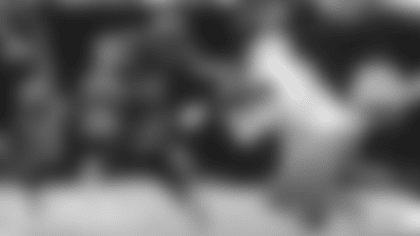
A few days after the close of the NFL Annual Meeting and a few months ahead of when the changes will hit home, the league's players, fans and media are wrapping their heads around the rules changes that were voted through in Orlando.
Of the two rule-change headliners, one involves a play that will be seen quite a lot for at least the upcoming season and will take some getting used to, while the other concerns a tackling technique that will only be noticed by its hoped-for absence from the game.
Eric Allen of newyorkjets.com was joined by several national reporters to talk about the impacts the new rules will have on the NFL. The hot topic: a sweeping new rule for kickoffs and returns.
"Strategically, it's going to be interesting," NFL Network Insider Tom Pelissero said. "It has the possibility of having maybe some unintended consequences. But to the extent that the league wants an exciting play that's not going to get people hurt, this is the best idea they've come up with yet."
The overview of the rule, passed 29-3 by the owners Tuesday after perhaps some jawboning with commissioner Roger Goodell, executive VP of football operations Troy Vincent and competition committee chair Rich McKay, reads:
By Competition Committee; for one year only, amends Rule 6, to create a new form of a free kick play that is designed to: (1) resemble a typical scrimmage play by aligning players on both teams closer together and restricting movement to reduce space and speed; and (2) promote more returns. Permits the Replay Official automatically review whether a free kick legally touched the ground or a receiving team player in the landing zone."
Robert Saleh: "I'm on Board"
"Space," "speed" and "excitement" are the buzzwords dominating the post-vote discussion. Jets head coach Robert Saleh is all in on all those objectives as well as with the new rule, and he said special teams coordinator Brant Boyer is as well.
"The kickoff is exciting," Saleh told Allen. "I really appreciate the fact that we're trying to keep special teams involved and a big part of the game. I appreciate all the work that went into trying to eliminate the space and the collisions and the thoughtfulness with regard to player health and safety while keeping special teams strong. I'm on board, I'm excited about it."
But the facelift to one of pro football's for, oh, th past century, will be massive. Among the changes: While the kicker will still kick the ball from his own 35, his 10 coverage teammates will move from their 35 to the receiving team's 40 while at least nine of the receiving team's blockers will line up between their 30 and 35, the new "setup zone." One or two returners will be positioned in the newly established "landing zone" from the goal line to the 20. Only the returners can move until the ball is touched or hits the ground.
No more fair catches inside the 20. Touchbacks will place the ball at the 20 if a kick rolls from the landing zone into the end zone and is downed, or to the 30 if the kick first lands in the end zone and is downed or flies over the end line.
NFL Network's Mike Garafolo summed up the process: "You're going to have two lines of players. The ball's going to travel over their heads. They're not going to move — it's going to look like a Madden glitch for a second. And then they're going to get at it." Pelissero likened it to the high rewards and risks of a cover-zero blitz.
The intended results will be a rise in returns, from last year's 22% of kickoffs returned in the NFL to something a little nearer to the 97% of KOs returned that the XFL experienced last year with its similar rule. Those previously mentioned unintended consequences could be a spike in KO-return TDs. The league had only four returns taken to the house last year, a 30-season low and far off the record high of 25 TD returns in 2007. Yet the XFL, on far fewer returns, had just one return TD.
And while the XFL averaged a tame 21.3 yards/return, the NFL's average should be more robust. Some teams were said to be exploring player acquisitions in Orlando in light of the rule change, and Garafolo said the NFL wanted to hold the vote earlier this week because the owners' next gathering is in May, after the draft, and the league wanted teams to have a verdict on the rule change if teams wanted to draft accordingly in late April.
"I think we're still going to have to tinker with it," Goodell said, "but I think it'll be a big improvement and bring the play back to being a relevant play."
"From a player health and safety perspective, this is going be a safer play," CBS Sports NFL Insider Jonathan Jones said. "And we're going to have more excitement in a three-hour-long game because we're going to get 10 to 12 kickoff returns in every game."
Booting the Hip Drop from the Game
Legislating against the swivel hip-drop tackle had different groups of aye-sayers and nay-sayers. The owners passed the rule 32-0, while the consensus reaction from defensive players on TV, radio and social media was less positive.
"Getting it out of the game makes sense," said Ian Rapopport of NFL Network Reports. "I see the defensive players' response is 'What do you expect me to do?' And I think the NFL's response is, 'Not that.' Not something where you can so obviously injure a player. There are plenty of other ways to tackle."
As opposed to kickoffs having become a "ceremonial dead play" for all to see, the hip-drop had perhaps been a less visible issue. Some players during the past season said they didn't even know what it was, and some teams have said that in any event they don't coach their players to use the hip-drop in getting opponents down. For those who want a graphic description of the technique, Jones said:
"It involves grabbing from behind, unweighting yourself, swiveling your hips, then dropping on the back of a player's legs."
But Jones predicted the effect of this rule won't be "games littered with yellow flags." Pelissero agreed, saying the NFL "wants it out. ... I bet you'll see a bunch of flags and fines in the preseason as they're just trying to correct the technique. Is it going to make a huge difference in games? I think above all else, they just want to make sure nobody's teaching that style of tackling."













